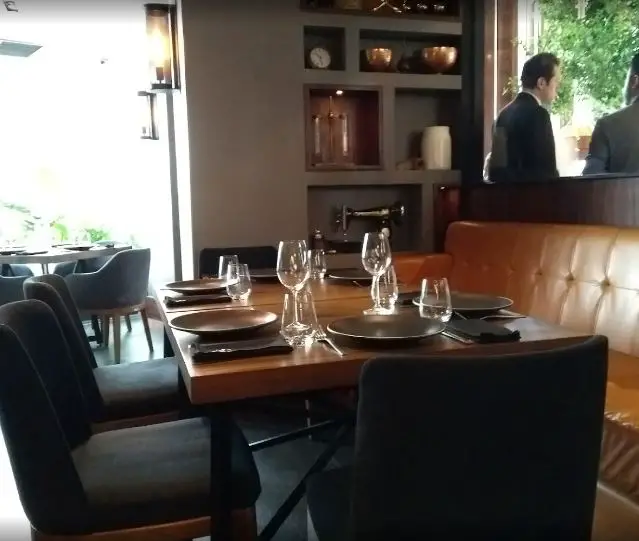Are there any dining customs I should be aware of?
Post ByAdequate Travel
Summary
If you're new to a culture, it can be intimidating to sit down for a meal. It's important to be aware of the customs and expectations that come with each unique dining experience. In this blog, we'll explore the different dining customs from around the world and give you an insight into how to navigate them with confidence. Enjoy!
Travellers can find valuable travel information for tourists, such as local customs, must-see attractions, and dining recommendations, to make the most of their trip.
Yes, there are various dining customs that you should be aware of when visiting different countries or cultures. These customs often govern table manners, seating arrangements, and general etiquette during meals. Here are some examples of dining customs in different regions:1. European Dining Customs: - 'European Style' or Continental Dining: In many European countries, the Continental style of dining is followed. This involves holding the fork in the left hand and the knife in the right hand throughout the meal, with the tines of the fork facing downwards. - Keeping Hands on the Table: In countries like France and Italy, it is considered acceptable to keep your hands on the table during the meal. This is seen as a sign that you are engaged in the conversation and enjoying the meal.2. Asian Dining Customs: - Chopstick Etiquette: In East Asian countries like China, Japan, and Korea, it is important to know how to use chopsticks properly. For example, it is considered impolite to point your chopsticks at others, spear food, or leave them sticking upright in a bowl of rice. - Sharing Dishes: In many Asian cultures, it is common to share food from communal dishes placed in the center of the table. It is polite to take small portions and allow others to have their share before taking more.3. Middle Eastern Dining Customs: - Eating with the Right Hand: In Middle Eastern cultures, it is customary to eat with the right hand. The left hand is generally considered unclean and used for personal hygiene purposes. - Accepting Offers of Food: When dining in Middle Eastern households, it is customary to accept offers of food or beverages, even if you are full. It is seen as a gesture of hospitality and refusal may cause offense.4. South American Dining Customs: - Using Utensils: In many South American countries, it is common to eat with utensils rather than using your hands. Forks and knives are typically used, and hands are kept above the table. - Toasting: In countries like Argentina and Brazil, toasting during meals is a common practice. Often, guests are expected to make a toast as a sign of appreciation for the meal and the company.It is important to note that customs may vary within countries and among different social settings. When in doubt, observing and following the lead of your host or locals is a good approach to navigate dining customs successfully.
Yes, there are various dining customs that you should be aware of when visiting different countries or cultures. These customs often govern table manners, seating arrangements, and general etiquette during meals. Here are some examples of dining customs in different regions:1. European Dining Customs: - 'European Style' or Continental Dining: In many European countries, the Continental style of dining is followed. This involves holding the fork in the left hand and the knife in the right hand throughout the meal, with the tines of the fork facing downwards. - Keeping Hands on the Table: In countries like France and Italy, it is considered acceptable to keep your hands on the table during the meal. This is seen as a sign that you are engaged in the conversation and enjoying the meal.2. Asian Dining Customs: - Chopstick Etiquette: In East Asian countries like China, Japan, and Korea, it is important to know how to use chopsticks properly. For example, it is considered impolite to point your chopsticks at others, spear food, or leave them sticking upright in a bowl of rice. - Sharing Dishes: In many Asian cultures, it is common to share food from communal dishes placed in the center of the table. It is polite to take small portions and allow others to have their share before taking more.3. Middle Eastern Dining Customs: - Eating with the Right Hand: In Middle Eastern cultures, it is customary to eat with the right hand. The left hand is generally considered unclean and used for personal hygiene purposes. - Accepting Offers of Food: When dining in Middle Eastern households, it is customary to accept offers of food or beverages, even if you are full. It is seen as a gesture of hospitality and refusal may cause offense.4. South American Dining Customs: - Using Utensils: In many South American countries, it is common to eat with utensils rather than using your hands. Forks and knives are typically used, and hands are kept above the table. - Toasting: In countries like Argentina and Brazil, toasting during meals is a common practice. Often, guests are expected to make a toast as a sign of appreciation for the meal and the company.It is important to note that customs may vary within countries and among different social settings. When in doubt, observing and following the lead of your host or locals is a good approach to navigate dining customs successfully.
Suggested Questions
- Schloss Mespelbrunn, Mespelbrunn: Horror Story, History & Paranomial Activities
- Kloster Irsee, Irsee: Horror Story, History & Paranomial Activities
- Berliner Unterwelten, Berlin: Horror Story, History & Paranomial Activities
- Hexenmuseum, Schweinfurt: Horror Story, History & Paranomial Activities
- Alte Pinakothek, Munich: Horror Story, History & Paranomial Activities
- Hotel Elephant, Weimar: Horror Story, History & Paranomial Activities











